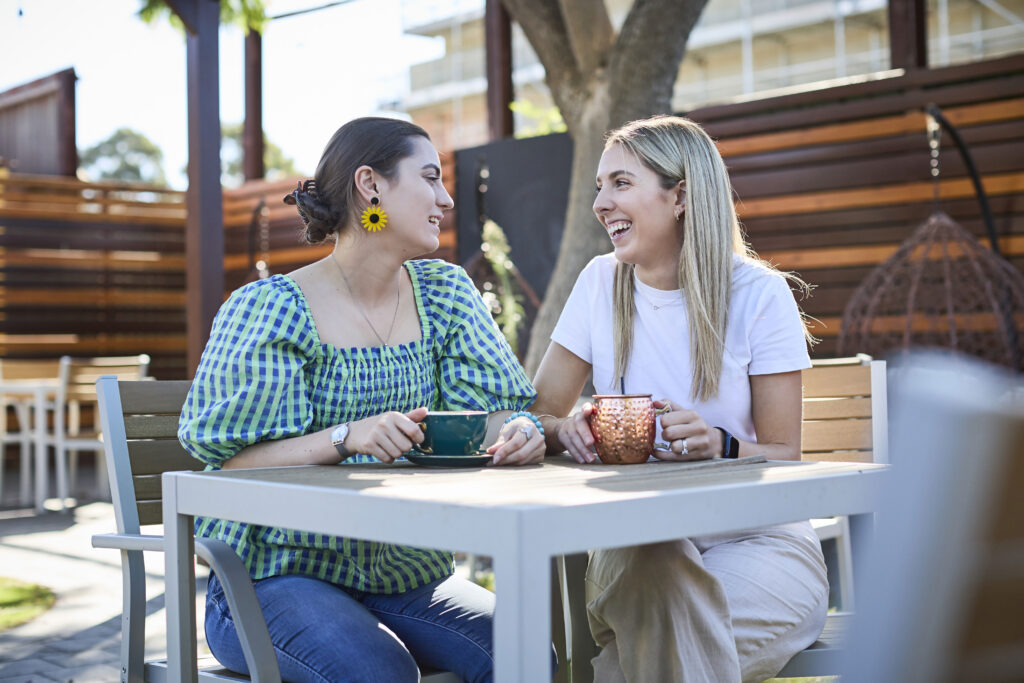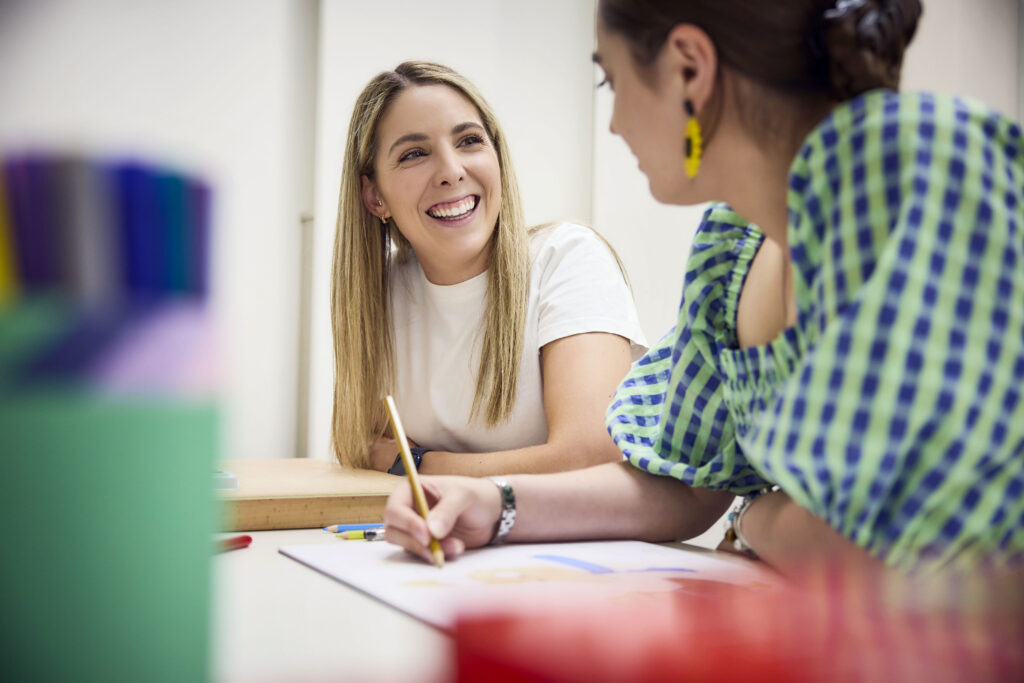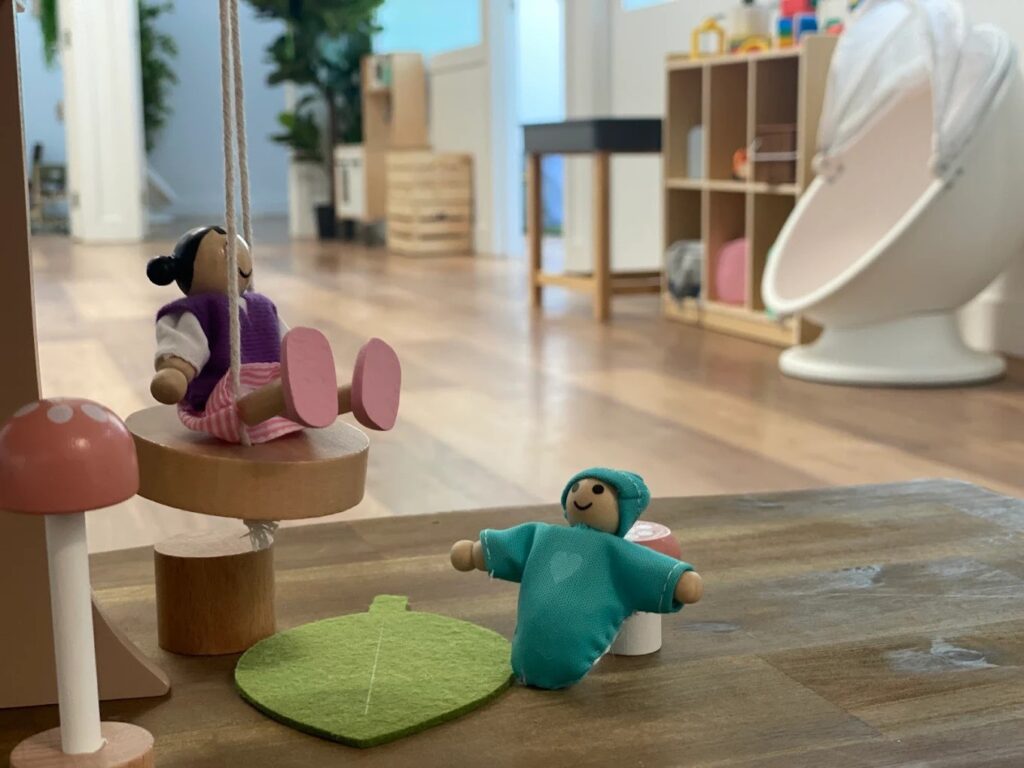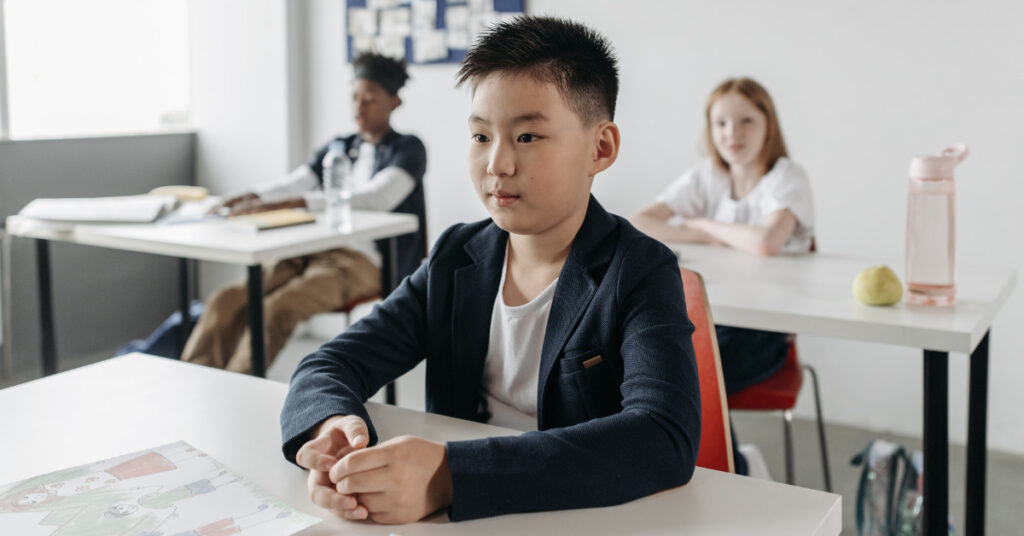Sensory processing: what is it and how it impacts learning
Sensory processing challenges are more than a collection of quirky traits or difficult behaviours; they are a complex experience that affects how individuals perceive, process, and respond to the world around them.
As occupational therapists, we recognise that each person’s sensory profile is unique.
Our goal is to empower individuals—whether that’s a child navigating a noisy classroom or adults confronted with overstimulating environments—to harness their own sensory strengths and overcome challenges in everyday life.
Sensory processing and child development
The way we understand development is similar to how one would understand a house.
When you walk into a new house, you wouldn’t comment that the house has a good foundation.
However, if you see damp in the walls, cracks in the ceiling, or if the curtains are falling off the walls, you might wonder how well the house was built.
It is the same with development.
If a child’s foundations are not strong, we would see cracks in their skills or emotional development.
As a sensory integration occupational therapist, we see sensory integration as being the foundation on which our development is built.
What is sensory integration?
Sensory integration is the process by which people register, modulate, and discriminate sensations received through the sensory systems to produce purposeful, adaptive behaviours in response to the environment (Ayres, 1976/2005).
Organising sensory input from our body and surroundings is a normal life function.
This process enables us to make sense of the world and respond in ways that are effective and appropriate.
It impacts virtually every aspect of our daily lives, from sleeping to learning, play, eating, and social interactions.
When these processes are disrupted, however, daily activities can feel overwhelming, and even simple tasks may require considerable energy and planning.
Some individuals may be hypersensitive/over-responsive, reacting intensely to stimuli such as bright lights, scratchy clothes, or loud noises.
Others might be hyposensitive/under-responsive, seeking out extra sensory input to feel well-regulated and engaged.
The environment and sensory integration
Sensory input directly affects mood and stress levels.
For example, quiet spaces, deep pressure touch, gentle lighting, or calming music can promote regulation and a sense of calm, while overwhelming stimuli—like loud noises, busy environments, harsh smells or too many people in your space—can trigger anxiety or discomfort.
This is why children may seem settled in one environment and struggle in another.
Sensory regulation strategies, often used in occupational therapy, help individuals manage these responses more effectively to enhance functioning across various places and spaces.
Which sensory systems are involved?
We know about our five ‘seen’ senses: hearing, taste, touch, smell, and sight.
However, what we really need to be interested in here are our three ‘hidden’ senses: vestibular (movement), proprioception (body awareness), and interoception (internal cues from our body).
As therapists, we are particularly interested in the interaction between and development of the vestibular, proprioception, touch, vision, and hearing systems.
These are important in supporting our ability to use our body, concentrate, develop self-esteem and confidence, as well as having self-control and academic skills.
The vestibular system
The vestibular system gives the brain information about where our heads and bodies are in relation to gravity.
It plays a role in taking in sensory information about our balance and the movement of our eyes, head, and body.
It also assists in generating muscle tone that allows us to move in a well-coordinated manner.
The vestibular system is linked to our gravity receptors and therefore gives us a physical and emotional sense of being ‘grounded’.
Proprioception
Proprioception refers to sensory information we receive directly from our muscles, joints, and skin about our own movement (rate, speed, and force) and body position in space.
Thus, vestibular-proprioceptive refers to the simultaneous input we receive from our head and body positions as we move.
These systems work together for appropriate balance, postural tone, eye movements, emotional security, and adequate arousal levels.
Interoception
Interoception is how our body tells our brain what is going on inside our body—when we are hungry or feel full, when our heart is beating fast, or when we have that sensation of butterflies in the stomach.
Sensory processing plays a key role in recognising social cues—such as tone of voice, facial expressions, and body language.
This often comes from our interoception and visual processing.
Some individuals with sensory processing challenges may struggle with interpreting or responding to these cues, which can influence social engagement, attention, and connection with others.
But how does this all make us feel?
It is important to note that we can experience our sensory systems in different ways and that this can be complex to understand at the start of the sensory processing journey.
It has been found that people can be sensory sensitive and sensory seeking at the same time across different senses.
Responsiveness can be dependent on a situation; for example, a stressful situation can make us more—and sometimes less—aware of sensation.
Sensory profiles
There are different profiles with regards to sensory processing.
Let’s explore what these are and how they may affect your child.
We also look at general strategies that can be helpful in helping children find a regulated state:
Sensory seeking
Children actively seek out sensory experiences, often engaging in rough play, spinning, or jumping.
They are the children who need the world to be faster, brighter, and louder, and benefit from increased sensory input to feel regulated.
These children may:
- Seek out and create sensory stimuli to function
- Be active and on the go
- Continuously looking to engage
- Experience sensations as enjoyable
- Be easily bored
- Often fidget
- Be excitable and energetic
- Act impulsively
- Become angry or aggressive quickly
Low registration
These children may not react to sensory inputs as expected, showing a diminished response to stimuli.
They might seem oblivious to pain or not respond to their name.
They often do not register when they are wet, messy, or that you are calling their name.
These children often operate with their ‘head in the clouds’.
They, like sensory seekers, benefit from increased sensory input to reach their optimal function/arousal.
These children may:
- Take longer to respond to sensory input
- Miss environmental cues
- Appear uninterested
- Appear withdrawn
- Are conscientious
- Focus on distracting environments
- Miss details and important things
Strategies for the sensory seeker
We are looking to alert the low registration children and meet the needs of the sensory seekers:
- Be creative and change the dynamic during the day with sensory-rich breaks
- Have them engage in ‘helpful’ tasks that provide movement and deep pressure
- Allow for active movement breaks
- Add variety and novelty where possible. They’ll be happy to demonstrate/trial new tasks
- Instil a sense of safety and caution and then allow freedom where possible
- Don’t allow for chaos—they still need to be part of the group and they too thrive on routine
Sensory sensitive
These children are often called sensitive or fussy in their nature.
For them, sensory input can be overwhelming, and they may react negatively to sounds, textures, or lights.
They might cover their ears or avoid certain activities.
These children may:
- Be easily affected by the environment
- Irritable and easily distracted
- Show discomfort with sensory input
- Have a high level of awareness of the environment
- Be detail orientated
- Be a perfectionist
- Come across as shy and withdrawn
Support strategies
- Allow them time for space and time out
- Create womb spaces like tents and hideouts
- Prepare the child for new situations and routines—have the parents on board with this to discuss new routines and what to expect on the day
- Having visual schedules to help with transitions
- Set the stage for sensory regulation at the start of the day and before new tasks
- Have these children arrive earlier in the morning
- Build a structure and routine they can thrive on
- Use calming sensory input such as deep pressure, obstacle courses without too much challenge, use strategies such as headphones or weighted items
- Monitor the volume and tone of your voice
- Partner them with a like-minded child
Sensory avoiders
Kids exhibiting avoidance behaviours will steer clear of specific sensory experiences, such as refusing to touch certain textures or avoiding crowded places.
They actively avoid activities, people, or tasks which may challenge their sensory tolerance.
These children may:
- Feel easily overwhelmed or bothered by stimuli
- Resist change
- Rely on rigid rituals and routines to function
- Need clear expectations to manage anticipated sensory overwhelm
- Be more anxious and function on ‘high alert’
- They can also be stable in their mood and participation as they only engage in what they can manage from a sensory level
Support strategies
- Allow for sensitivities without criticism—show an understanding of their needs and tolerance
- Understand that groups may be overwhelming for them and honour their feelings
- Follow structure and routine, especially at the beginning and end of tasks or parts of the day
- Use gentle encouragement to try new things through exposure but never forcing
- Do not force the child to do things they are sensitive about (e.g. tactile input and messy play
- Allow for breakaway spaces when it all becomes ‘too much’
Assessment of sensory processing challenges
Occupational therapists examine these patterns rigorously, considering factors such as environmental triggers and the individual’s unique history of sensory experiences.
Through detailed observation and client-centred assessment, we aim to understand not just the ‘what’ of a sensory challenge, but also the ‘why’ behind it.
This depth of insight allows us to tailor interventions that support improved attention, emotional regulation, and participation in meaningful activities.
Every intervention plan begins with a thorough evaluation of the sensory system.
Therapists often use standardised assessments alongside naturalistic observation to identify patterns of sensory over- or under-responsiveness.
With this data, we design intervention plans that are as unique as the individual—ensuring that every strategy is grounded in the person’s specific needs and goals.
At Early Start Australia, we have occupational therapists working with families to improve understanding of sensory processing and how this affects their child across different environments.
By providing reasonable accommodations, sensory supports, and home programmes, we can support your child as they navigate their development and goals
Therapy programs to support sensory processing
At ESA, therapy intervention is fun, child-centred, and goals-based!
Sensory integration techniques help children build a more organised response to sensory stimuli.
Activities may include swinging to enhance vestibular input, using jumping and crashing for proprioceptive feedback, or using hands-on activities for sensory awareness.
This therapy is not simply about ‘fixing’ a problem but about empowering clients to develop adaptive strategies.
It strengthens brain connections that help with learning and everyday tasks.
Sensory diets
Like a food diet, a sensory diet is a planned set of sensory activities tailored to a child’s needs.
For someone with sensory processing difficulties, scheduled breaks and specific activities throughout the day can help maintain optimal arousal and regulation levels.
Whether it’s a brief session with a fidget tool or deep-pressure activities, these strategies are integrated seamlessly into daily routines in ways that support both performance and emotional wellbeing.
Environmental modifications
Sometimes the environment itself must be adjusted.
Creating sensory-friendly spaces—be it quiet corners in schools, adapted seating solutions, or use of assistive devices—can significantly reduce distress.
Occupational therapists often advocate for these adaptations to ensure that individuals have access to environments that support, rather than overwhelm, their sensory systems.
Collaboration and advocacy
Successful intervention is a team approach.
We work closely with educators, family members, and other professionals to ensure that everyone involved in the child’s care is informed and empowered.
Through education and collaboration, we help others understand unique sensory challenges, enabling a community-wide approach to support.
This holistic involvement often leads to lasting changes in the child’s environment, making daily life easier to handle.
Empowering self-regulation strategies
In addition to external supports, learning self-regulation skills is a key part of therapy interventions.
Occupational therapists encourage and teach strategies like mindfulness, controlled breathing, or the use of personal sensory tools.
These methods help individuals manage their reactions to sensory input, promoting independence and self-advocacy.
Reach out to our care team to learn more about how Early Start Australia can support your child and family.
By Nicole Katzenellenbogen









